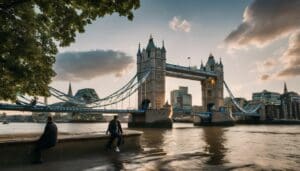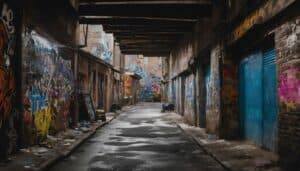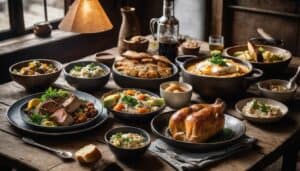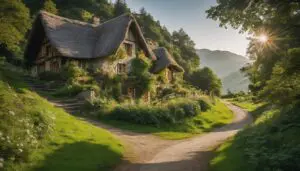Ulster Folk Museum- Cultra, Belfast
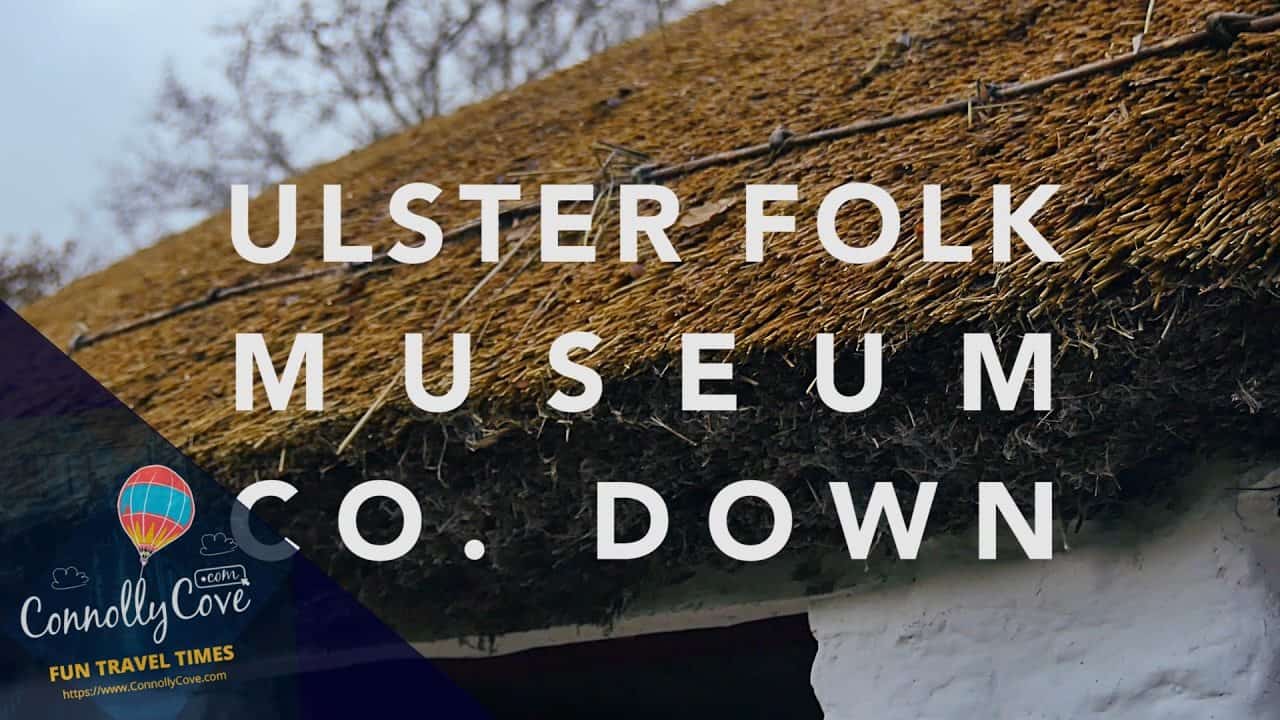
Updated On: April 07, 2024 by Noha Nabil
How long would you live without the most minor use of technology? Imagine spending your life shopping, working, and driving using early forms of technology. Why do people enjoy visiting the Ulster Folk Museum?
There they find representations of a once-experienced, simple and calm life. Don’t miss the Ulster Folk & Transport Museum in your next holiday plan and get introduced to the aspects of the past.
The Museum lies on the central Belfast to Banger Road, east of Belfast City Centre in Cultra near Hollywood, County Down.
Get on the bus heading to Bangor Road. Then, get off at the bus stop outside the Museum entrance. You will need to walk downhill for about 15 minutes to reach the Folk Museum or uphill for about 5 minutes to get to the Transport Museum. Or get on the train to the Cultra Halt Rail Station. It will take only 2 minutes to get to the Transport Galleries. If you want to go to the Folk Museum, walk uphill for about 15 minutes.
A Brief Before Your Visit to Ulster Folk MUSEUM
In 1958, primary legislation issued in Northern Ireland was behind reserving the past rural life. The spread of high technology led to human development, so a past life perished.
Private property was taken from Sir Robert Kennedy to build the Belfast Transport Museum in 1961; then, it was presented to the public in 1964. 1967, the Ulster Folk and Transport Museum emerged after merging with the Folk Museum.
An expansion brought out later led to the opening of the Road Galleries and the Museum’s Rail in 1993. National Museums of Northern Ireland was set up when the Ulster-American Folk Park and the Ulster Museum combined with the Ulster Folk and Transport Museum in 1998.
The Folk Museum
Travelling back in time has become a possibility at the Folk Museum. It holds reconstructed or dismantled buildings and houses within its 170 acres, revealing the rural life of the 20th century.
A model of an old Ulster town called “Ballycultra” is presented to visitors, including shops, churches, etc. A complete figure of the old countryside is also displayed with the crops, cattle, cottages, and farms. Moreover, various activities are provided for visitors, showing how beautiful the Irish life was through cooking, needlework, printing, and traditional crafts.
International recognition was attained through a new fan base after the stunning new developments of the site. A substantial sum of lottery money contributed to building an outhouse at the heart of Ballycultra Town, representing a remarkable past.
Let’s Show You Around
Splendid buildings are found either in the rural area or in Ballycultra Town. One can notice that they are just replicas or dismantled.
Baird’s Print Shop (building 16)
It’s situated in Ballycultra Town in a replica two-floor building showing a past design in Colerain, Co. Londonderry. It also reveals Ulster’s letterpress printing business in the 1900s.
The ground floor contains two rooms: the machine room, where three working presses are found, and the compositor room, where splendid sample printing pieces are kept. The machines were run by a printer, which was in charge of checking whether the printing presses were run efficiently and of managing how well the place is supplied with paper and ink.
Concerning the compositor, he was responsible for collecting types whenever there was a printing job and also designed the page layout. It is also noticeable how the compositor’s room was untidy, showing the past busy working environment of such places.
Ballydown National School
Enjoy watching the original building that was dismantled to be placed in the Rural Area – Discovery Farm 53 in 1980. It was initially placed in County Down and was built there to teach children of different cults.
Adopting the Commissioners of National Education’s architectural school plan released in 1858, the building was constructed to be the same design as national schools built in that era. The whole school has just one classroom with only one fireplace for heating. There are also highly placed windows on one of the sides of the classroom.
Education was firmly controlled. For example, while some pupils were solving mathematical exercises or doing some writing at their desks, others were reading and repeating their lessons at the front of the classroom. Moreover, sticks were frequently used as a sort of punishment due to the firm discipline followed. However, many children there felt thankful and appreciated the school’s role in providing free education.
Two teachers or just one usually worked there and the school’s principal was Master William Thompson Gilmore from 1871. He worked there for 40 years.
The school was built to take in 100 pupils, but they rarely attended in complete numbers due to truancy, work, illness, and other reasons.
Ballyveaghmore Farm
It’s an original building in the Rural Area-Discovery Farm no.49. In 1994, the farm itself was dismantled from its natural place that lay a few miles away from the coastal village of Annalong in the small hills below the Mourne Mountains.
The farm was an area of about 10 acres. Local granite was used to build the small farmhouse with a thatched roof. You can also find two typical rooms: the hearth and the kitchen on the same side of the chimney and a bedroom on the other. In addition, the floors found are from beaten earth and granite slabs at the doorway threshold are placed around the hearth.
In the past, the hearth fire was used to heat the house, a nearby field supplied the farm with water, and an oil lamp or candles were used as light sources. Moreover, a covered granite cowshed beside the farmhouse replicates the one found at the Mournes in the Bloody Bridge area.
More on Ballyveaghmore Farm
Professor Estyn Evans, founder of the Folk Museum and one of the first Ulster scholars, gave the building a good reputation by renting it during the summer. As an appreciation for his lifework, an exhibition of his work and life is held in the replica cowshed.
Historically, a farmer, Joe Baird, built the farmhouse to be his family home, and it lasted as a family residence for three generations until the death of one of the members in 1991, Tommy Baird, who never got married. After the farmhouse had been donated to the Museum, The Ulster Folklife Society and The Heritage Lottery Fund helped immensely in the re-erection of the buildings at the museum.
The farmyard is displayed as a street with a line of buildings, and the dry stone–walling near the house copies a Mournes feature.
Church of Ireland
It’s an original building found in Ballycultra Town, building no.11, built in 1790. It was dismantled from Carnacally, Kilmore, Co. Down to be transferred to the Folk Museum after 186 years of its construction.
Kilmore church is a good model of a church in Ireland in the late 1700s. It’s a rectangular building of local stone, with a porch at the west end and a bell tower. The Communion table is placed below the large window in the east part where the preaching place is on its left side, and the reader’s desk is on its right.
Kilmore Church was built as one of the Church of Ireland’s properties to hold a capacity of 160 people. The parish who used to attend there were farmers or families from rural areas, and their graveyard was placed beside the church.
Moreover, distinctive early and later features are noticeable from the inside. The 1790th wooden box pews, commonly used in many churches, were rebuilt and replaced by others to be placed facing the Communion table by the mid-1800s. In addition, a solid fuel stove was put there to provide heating, which did not exist until the 1860s, when oil lamps or candles were used previously to light the place.
A hall, a school, or a store! This is what the building represented when another new church opened in 1869. Later in the 1960s, there was no need for the old building to be used by the parish at Kilmore, so it was accepted that the building be dismantled.
Drumnahunshin Farm House
This farmhouse, an original building built within a 30-acre farm holding, dates back to the early 1800s. In the 1980s, it was dismantled and transferred from its original site in Drumnahunshin townland, County Armagh, to the Folk Museum. The farmhouse was originally a one-floored, thatched house holding two rooms and a central kitchen hearth and jamb wall. The farmhouse underwent improvements and extensions later in the early 1900s. Fine mahogany furnishings were added, as well as decorative fire surrounds.
Coshkib Hill Farm
An original farmhouse built in the 1850s and transferred to the Folk Museum from Coshkib, Cushendall, County Antrim, after being dismantled in 1965. It was re-erected on a steeply sloping site reflecting its original site. It was built of stone into two storeys. However, it is likely to have been a simple thatched farmhouse holding two rooms initially. Later in the early 1900s, the second floor was added, providing two more rooms. The farmhouse is modelled after the houses of the Glens of Antrim.
The heating of the farmhouse depended on the open hearth in the kitchen around which family members and neighbours gathered and chatted, daily meals were taken, and household duties were done.
On the 35-acre farm property of the Hyndman family, holding the farmhouse, cattle, sheep and horses were raised, as well as pigs and poultry. Crops, such as oats and potatoes, were cultivated there too.
Gortiscashel Flax Mill
Scutch mills were erected on suitable rivers in flax-growing areas. In the townland of Gortiscashel in the Sperrin Mountains of County Tyrone, the small flax mill was built in 1850. Later in the 1960s, the original mill was dismantled and moved to the Folk Museum.
The main purpose of the mill was the scutching of flax, which was previously a tiring job done by hand. The process involves pounding the flax to extract the fibres from the flax stem. Despite how the mill made life easier, There was a constant risk of fire since both the dusty waste master of the scutching process (tow) and the flax were highly combustible.
Duncrun Cottier’s House
This beautiful original house was built in the 1750s and was transferred to the Folk Museum in 1961 from Duncrun townland in Upper Magilligan, north County Londonderry. It was the first exhibit building at the Museum. The Duncrun house had been home to the rural labourer Doherty-Clyde family for four generations.
The house encloses one bedroom and a kitchen. The walls were built of stone, and the floors were made of earth. The hearth fire has an original wooden framed, clay-plastered chimney canopy.
Hand and Pen Orange Hall
On Wilfred Garland’s ‘Hand and Pen’ farm, the Orange Hall was initially built in 1884. Later, in 1995, it was dismantled and moved to the Folk Museum from the townland of Corbeg, Silverstream, County Monaghan, after being donated to the Museum in 1989. The place held social occasions such as dances, evening gatherings, and the annual 12 July parade. The Orangemen of the county would gather for the parade.
Parochial hall
This is not the original building, and it’s a replica. The original building is a listed building still at its original location. The original Parochial Hall was founded in 1899 and finished in 1900.
It was the centre of many social events and activities for Catholics in the area. It was a theatre where drama groups and touring companies performed their plays. Competitions were also held there, giving room for music playing, Irish recitations and Irish dancing. In the 1980s, the Hall became a venue for student recreation.
Royal Irish Constabulary (RIC) Barracks
In the late 1800s, few police stations were built while many barracks were in suitable domestic buildings. So, part of this building was designated for Antrim town and the local area for the Royal Irish Constabulary Barracks. Later in the 1900s, aware that the Museum did not have a police barracks, part of the terrace was designated a Royal Irish Constabulary (RIC) Barracks. You’ll find an exhibition of police history, courts and the legal system in Ireland.
Picture House
It was a silent cinema from the mid-1800s until 1931. This is the original building, not a replica. It was established at Gilford, County Down, where it was run by a small local businessman, Mr George Pentland, and later in 1996 was transferred to the Folk Museum. At first, it was a hay store, then it was turned into a cinema before WWI. Remember the old cinemas we saw in movies with the projectors? This was one where movies were projected onto a whitewashed wall.
Despite how primitive it was, with the poor heating and the stoneware and hot water bottles used for heating, the Gilford Picture House was the centre of entertainment for the village of Gilford. The local mill workers were the main clientele.
Indoors and Exhibitions
- They love music
It presents marvellous recordings of indigenous music.
- Meet the Victorians
Want to know more about life under Queen Victoria? Such exhibitions introduce you to the Past Victorian life.
- Archives and the Library
A Splendid collection of television, prominent film, sound, and photographic archives of Northern Ireland is presented. Several TV or radio programmes like that of BBC Northern Ireland are also presented, and a considerable amount of recorded sound materials are played by RTÉ Raidió na Gaeltachta radio station. This place is more enjoyable because the Ulster dialects are presented in archives of about 15,000 magazines, books, and newspapers.
You will be more astonished when visiting other places in the museum too.
The Transport Museum
Visiting the Transport Museum with its splendid types of vehicles will make you feel as if you want to try them immediately. A various range of historical materials, cars, carriages, motorbikes and locomotives are presented to give you a a complete depiction of the past European public and private transport.
Permanent Exhibitions
All the usual, famous, exceptional, or unexpected achievements that have been done for transport are found and introduced in their best state.
The exhibitions are introduced in three sections:
- Winning Personalities
Driving, inventing, or even riding vehicles brings fame, luck, success, or victory throughout the ages. Those with key striking characteristics, like doing work resolutely, bolstering courage, and honouring commitment, are considered winners who can take thoughtful risks and push themselves beyond limits.
- Personal Bests
Taking exceptional journeys along the roads or racetracks and beating one another was top-notch and a worldwide achievement.
- Against the Odds
Transport helps facilitate economic and physical challenges and crosses cultural barriers. Here are some highlights of this exhibition:
- Crosslé Mk3 Racing Car
John Crosslé was the designer and the builder of such a car. It was used in racetracks like Dunboyne, Phoenix Park, and Kirkistown. In 1959, the Crosslé Car company was established, and the firm still repairs racing cars found in Holywood, Co. Down.
- McCandless Manx Norton Motorcycle 1952
A motorcycle racer, Rex McCandless, with a designed stunning frame stuffed with feathers, made the motorbike easier to control. That led all of Norton’s racing motorbikes, which dominated sports in the 1950s, to use such rigid and robust frames.
- Isabel Woods’ Mercian Racing Bicycle 1953
Keeping the bicycle of the lady who broke eight world records when only cycling for Belfast Cycling Clubs is fantastic. She had a record-breaking time of 23 hrs., 0 min. and 3 sec. while cycling in the Ladies ‘end-to-end’ Irish cycling near Ballycastle.
- Titanic
Why and how were Titanic and its sister ships, Britannic and Olympic, built in Belfast? What about the designs, personal stories, artefacts, and myths? You will find the answer to these questions at the Transport Museum.
- Titanic and The Exceptional Design
The Olympic, Titanic and Britannic concept of three ships appeared in 1907. At the exhibition, you will be introduced to the stunning design of the most incredible ship of the time.
- The Construction
During that time, the designed plans were complicated to be applied to building a real ship. However, thousands of workers worked their fingers to the bone to turn the designs from lines on paper into authentic ships.
- Stories
What were those stories related to the ship from 1911 to 2011? How were things going on board? How were people affected by the destruction of such a ship? You’ll find the answers to all these questions at the exhibition.
- Three Sister Ships
- Three different destinies of the White Star Line’s Olympic class were formed by Titanic, Olympic, and Britannic. Remembering Titanic
See how Titanic has been remembered in popular culture and her story re-imagined through films and music.
- Taken For A Ride:
The horse and carriage weren’t used only for transport, but they represented richness, power, and social etiquette as well. Vehicles’ elegance and style are considered now as fine examples.
The Ride Gallery introduces a wide array of images showing the development of the humble market cart till it became a carriage. Here are some highlights of this exhibition:
- State Landau
The Royal Victoria Carriage Bazaar built this one to be used by the High Sheriff. It was used for transporting judges of that era from their houses to the gateway of the periodic court, County Antrim Assizes.
- Brougham
For the sake of Lord Brougham, a small carriage named after him was built to be used in town. Carriages of the same kind became popular and were used as hackney cabs when they weren’t brand-new. When passengers wanted to talk to the driver, they pulled a cord tied from the backside to a hook on the driver’s belt on the other side.
- Mail Phaeton
A remarkable builder of high-quality vehicles, Peter’s & Sons was responsible for building Mail Phaetons. Men almost always drove such vehicles, and the Royal Family was among those customers. Those carriages were used for training horses, exercising, and travelling on specific long journeys.
- Rail Gallery
A collection of 40 Irish railway buildings and vehicles are presented to represent Irish railway history. The gallery walls also exhibit several drawings, photographs, paintings, and some artefacts that clarify the state of Ireland’s railways during its development or after its deterioration. These collections keep to the following themes: roots, construction of the railways, motive power used, transportation of goods, travellers, architecture, engineering, touristic issues and sending signals.
A decorated building from York Road Station is also found with a tea room designed by the man who helped greatly develop tourism and railways in Country Antrim—Berkeley Deane Wise.
- Road Gallery
A stunning selection of buses and trams is presented. They were used in Belfast, Howth, Fintona, the Giant’s Causeway, and Bessbrook. A wide range of vehicles is displayed at the ‘Wheels of Business’ and ‘Car Gallery’ exhibitions, including models commonly used, such as Mercedes, Ford and Morris.
Ready To Learn?
Learning at the Ulster Folk and Transport Museum is fun and joyful. Learning programmes and workshops are organized for pupils:
- Self-Guided visits(120 minutes)
- School Long Ago Ks 1&2&3 (30 minutes)
- Courtroom drama- Caught in the Act Ks 2&3&4(180 minutes)
- Life during the Famine Ks 3(60minutes)
- Society in the Past- tour KS 3&4(60 minutes)
- Houses and Homes-Hands-on workshops- Foundation& KS 1(60 minutes)
- Supporting Classroom Learning KS 3& 4(60 minutes)
- Titanic Programme KS 3(60 minutes)
For adults, learning is for all. Regardless of age, the museum assures you will learn unforgettable and interesting things. It organizes:
-
Creative Craft Classes:
Certain levels are taught in a set of classes over the year. Traditional crafts and skills can be learnt, such as blacksmithing, baskets, weaving, or woodwork. Classes for improving photography skills are held too.
-
Open Afternoons for Over 50s
At noon, the beloved over 50s are welcomed one Wednesday per month with free general admission. They can visit the place on the second Wednesday afternoon.
-
Live Well Workshops
Live Well project is held in the afternoons. This kind of programme is dedicated to old people who aren’t able to visit the museum for health reasons or cost issues. These workshops have a limited number of visitors and prioritize those who want to participate for the first time.
Residential Centre
An actual museum figure from the outside and a contemporary fashioned one from the inside! This is how the two units stand for visitors. The first building can hold 33 people: 5 staff members and 28 students. The other building can hold 40 people: 6 staff members and 34 students.
The two buildings can be booked for the same group, and the least number that can accommodate any of the blocks is 15 people. The establishment holds a lift and appropriate bathroom facilities and has a no-smoking and no-alcohol policy. The place is safe—security-wise—and leaders supervise visitors.
Facilities
- A kitchenette is available in each building, including a microwave, a kettle, a fridge, a crockery, a DVD player, and a TV.
- A shared dining room is available with meals prepared by museum caterers.
- A great hall is available for indoor activities; prior booking is necessary.
- 2 Staff rooms and 4 Dormitories, holding bunk beds and pillows. These dormitories are found in each unit.
The Amazing Out & About
What if you can’t visit the museum? Out & About project takes care of it. People around Northern Ireland can connect with the museum collections to experience their stunning stories and how the museum keeps them in their best state. The project targets many people to support the changes in society and boost luxury positively. It also includes the following:
- Outreach: Collections which are cleared in activities like roadshows or workshops.
- Cooperative projects: These can be workshops, community exhibitions, or art exhibitions.
Since the Ulster Folk and Transport Museum is one of the National Museums, it is always dedicated to connecting with local communities. Strong relationships and collaboration with regional communities are pursued throughout Northern Ireland.
So, check the Museum’s Facebook page regularly for the latest updates on initiatives, events, or even news in nearby areas.
What About Getting Involved?
Everyone can participate via:
- Donation:
With your help, the museum will always be able to represent to the whole world such precious collections.
- Friends of Cultra:
As a member, you will get great benefits and participate in developing the Museum. You can get discounts on purchases and publications. New exhibitions can also be viewed privately, and you would receive invitations for special events held for you as a friend of Cultra.
- Volunteering or Work Experience:
Through your contribution to working with the National Museums, you can take part in helping the Ulster Folk and Transport Museum.
- Annual Membership:
Individual, joint, or family membership. The tickets can be renewed too.
Hiring a Venue at the Museum
For all types of gatherings, the Ulster Folk and Transport Museum offers stunning places for holding your special occasions:
- Weddings: Cultra Manor, Omagh Meeting House.
- Award Ceremonies and Gala Dinners: Cultra Manor, Irish Railway Gallary.
- Reception and Networking: Cultra Manor.
- Photography and Filming: Ballycultra Town, the Rural Area.
- Meeting and Conferences: Cultra Manor, the Transport Museum.
Facilities
- Parking.
- Facilities for baby changing.
- Using credit or debit cards is allowed.
- Using Euros is allowed.
- A picnic area.
- Toilets.
- Gift Shop.
- Tea room or Café.
- Accompanying dogs must be arranged.
- Groups or coach parties are welcome.
Opening Times
- Tuesday: 10:00–16:00
- Wednesday: 10:00–16:00
- Thursday: 10:00–16:00
- Friday: 10:00–16:00
- Saturday: 11:00–16:00
- Sunday: 11:00–16:00
- It’s closed on Monday (except for Bank Holidays)
Admission Prices
The Ulster Folk Museum
- Child Under 5 years (Free)
- Child (£5.50)
- Student (£7.00)
- Adult (£9.00)
- Family 2/2 (£25.00)
- Senior citizen (£7.00)
- Family 1/ 3 (£19.00)
- Family 2/3 (£25.00)
The Transport Museum
- Child Under 5 years (Free)
- Child (£5.50)
- Student (£7.00)
- Adult (£9.00)
- Family 1/3 (£19.00)
- Senior citizen (£7.00)
- Family 2/3 (£25.00)
The Folk & Transport Museums together
- Child dual visit (£6.00)
- Student dual visit (£8.50)
- Adult dual visit (£11.00)
- Family 1/3 (£19.00)
- 2/2 Family (£29.00)
- Family 1/3 dual visit (£22.00)
- Family 2/3 (£29.00)
- Senior citizen dual visit (£8.50)
Contact Information
- Phone no.: 0845 608 0000
- Fax: +44 (0) 28 9042 8728
- Email: [email protected]
- Website: www.nmni.com/uftm
- Facebook page: https://www.facebook.com/ulsterfolkandtransportmuseum
- Twitter: https://twitter.com/UlstrFolkMuseum
Booking and Prices of the Residential Centre:
- Tel.: +44 (0) 28 9039 5097
- email: mailto:[email protected]
So, don’t hesitate to visit to get close to a 100-year-old life with all its means of transport and lifestyles.
Have you visited the Ulster Folk Museum? What did you enjoy most about it? Let us know in the comments below.
Also, don’t forget to check some other great places in Northern Ireland we have visited, such as: Belfast city and all the popular spots | Titanic Museum | Carrickfergus Museum | Peace Walls | Down County Museum | Independence Day at Ulster American Folk Park | The Giants Causeway | Headhunters Barber Shop and Railway Museum


